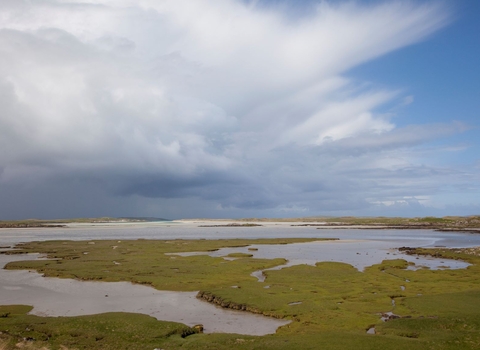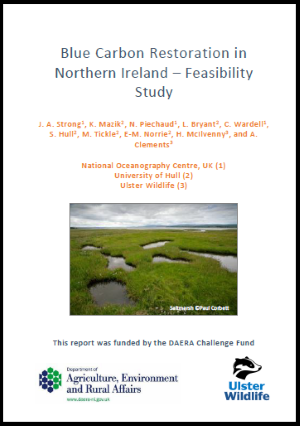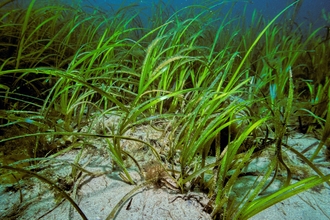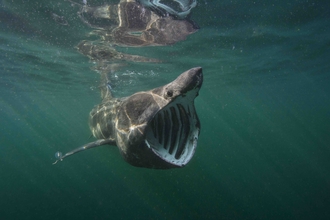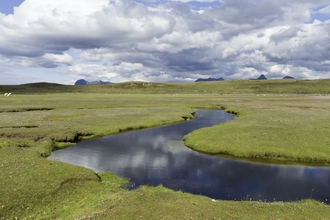Northern Ireland’s Blue Carbon Potential
The oceans have a huge role to play in tackling climate change, they absorb 20-35% of human-made carbon emissions every year. Carbon is part of the entire marine ecosystem, stored in both the living (e.g. animals and plants), and non-living (e.g. shells, skeletons and sediment) material. Some of these stores can lock carbon away for thousands of years like in the calcium carbonate shells of bivalves. Other stores are shorter-term, for instance on a monthly basis like in kelp forests.
A hectare of UK seagrass can store almost a tonne of carbon a year
A hectare of saltmarsh captures over two tonnes of carbon a year
Whether short or long term, the ability of marine habitats to store carbon is improved by maintaining productive, healthy and biologically diverse marine ecosystems. Northern Ireland’s seas contain a wealth of blue carbon habitats such as saltmarshes, seagrass beds, kelp forests, maerl beds and biogenic reefs, and protecting and enhancing these habitats is essential for healthy seas.
The Challenge
The facts about the ongoing and escalating biodiversity and climate crises are clear, and we are running out of time to avert dangerous climate breakdown. The health of Northern Ireland’s seas is currently in an unfavourable state. Key threats such as physical disturbance from human activities (e.g. fishing) and natural events (e.g. storm surges), increased water turbidity (reduced photosynthesis), coastal erosion/development, and climate change can all disturb, damage and compromise the ability of the sea to capture carbon.
Up to 100 hectares of saltmarsh are lost every year in the UK.
One of the issues that lies at the heart of the climate and biodiversity crisis, alongside urgently halting the accelerating losses of species and ecosystems, is vastly improving the management and protection of carbon stored in our marine ecosystems. By protecting marine habitats and their carbon stores, we can work with nature to support and recover resilience of marine ecosystems and strengthen the natural processes that help regulate carbon flows and atmospheric concentrations. We must take action to appropriately manage our blue carbon habitats to foster their restoration and recovery.
The benefits from protecting and restoring blue carbon habitats expands far beyond carbon storage. For example, many of these habitats increase biodiversity, provide vital nursery grounds for juvenile fish and shellfish, improve water quality, increase seafloor integrity, and create the foundations for stable ecosystems.
Northern Ireland’s Blue Carbon Journey
Blue carbon habitats have the potential to make significant contributions to Northern Ireland’s climate change targets, but the extent of this contribution is still unknown. Ulster Wildlife commissioned the Blue Carbon Habitat Restoration Feasibility Study to investigate where the current extent of coastal blue carbon habitats including seagrass meadows, kelp forests, saltmarsh, and shellfish beds are located, and what areas may be suitable for restoration or habitat creation work. This report was funded by the DAERA Challenge Fund, and delivered in partnership with the National Oceanography Centre, and the University of Hull.
Our key findings were:
- More than half of the estimated current extent of the coastal blue carbon habitats occur within Northern Ireland’s inshore Marine Protected Area (MPA) network. This means there is a significant opportunity to effectively protect their carbon sinks through implementation and enforcement of effective and enforced MPA management plans.
- There is the potential to triple the estimated blue carbon sequestration rate of the inshore MPA network through habitat restoration and creation.
- Partnership working and knowledge sharing is essential for habitat restoration programmes in order to access the expertise, funding and resources required for success.
However, this is just the first step in Northern Ireland’s blue carbon journey. Without improvements in our understanding of distribution, health and potential for enhancement of blue carbon habitats, we limit our ability to identify the most appropriate ways to manage, protect and monitor them.
Our recommendations for Northern Ireland’s blue carbon action plan
To optimise the potential of blue carbon habitats, Ulster Wildlife recommends the following actions:
- Develop a cross-cutting blue carbon strategy that would underpin action to protect, restore, create and monitor blue carbon habitats, with priority given to protection and restoration of existing habitats.
- Increase data collection and improve our knowledge on distribution, health, carbon storage values, sequestration rates, and likely response to climate change of blue carbon habitats.
- Incorporate conservation and enhancement of blue carbon habitats into the management of Northern Ireland’s seas, most notably in Northern Ireland’s Marine Plan, and MPA designation and management process
- Identify pilot projects for coastal blue carbon restoration and explore the benefits of co-restoration (restoring 2 or more species in the same location).
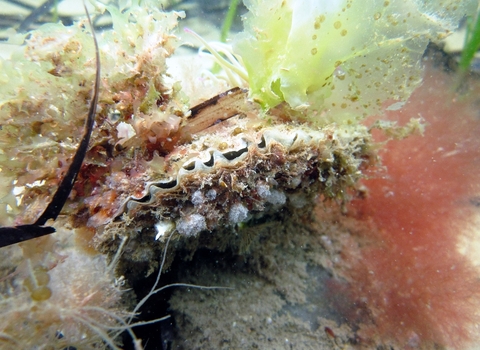
Native oyster (c) J Hatcher

